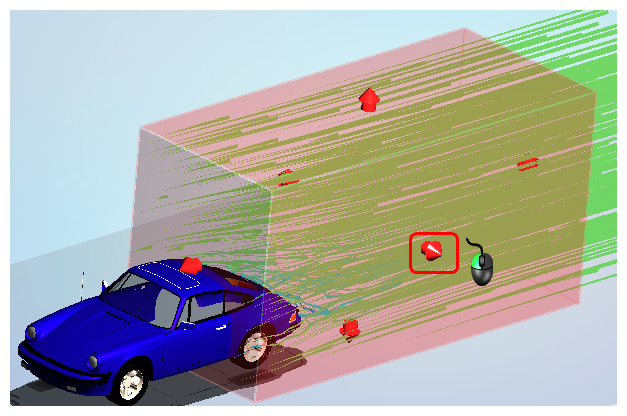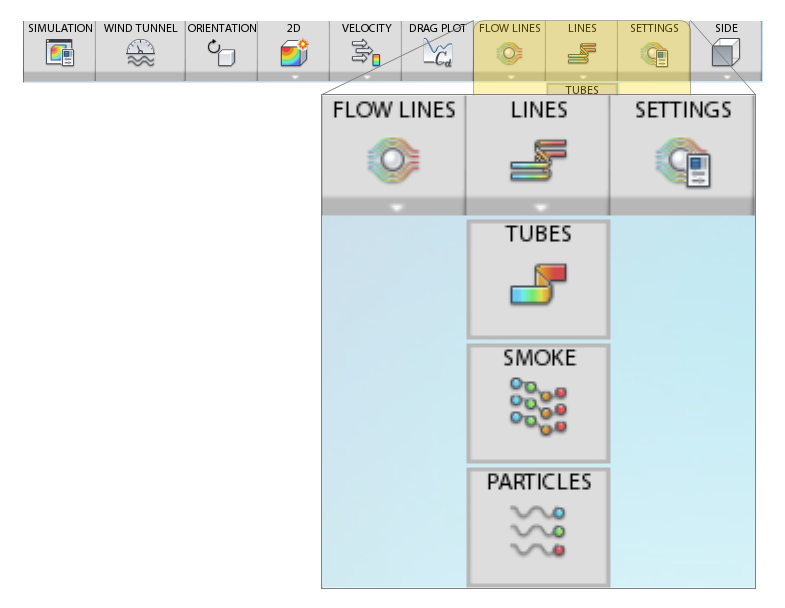
A useful way to experimentally visualize flow is to inject a colored dye into the stream. As the fluid carries the dye downstream, it is possible to observe the flow patterns by watching the how the dye moves.
In a similar way, flow lines show the direction and speed of the air flowing around the model in Flow Design. Flow lines are useful for visualizing flow patterns, wake formation, and circulation. In 2D analyses, flow lines appear on the 2D plane which defines the simulation location. In 3D analyses, flow lines are available throughout the wind tunnel, but can be concentrated to focus on certain regions of the model.
Flow line types
There are several options for displaying flow lines.
Lines: Traces that show the path of a flow particle moving through the wind tunnel.
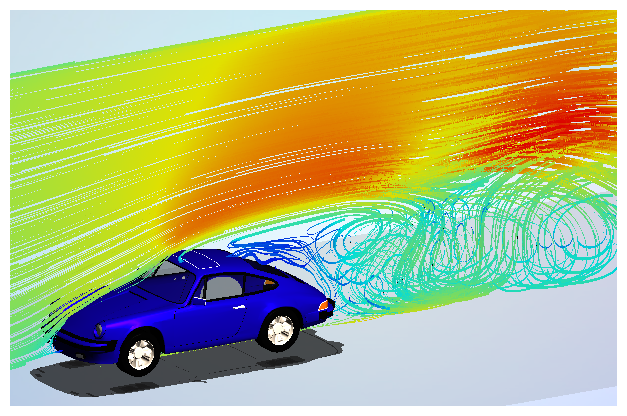
Tubes: Similar to lines, tubes show the flow path with a three dimensional visual shape.
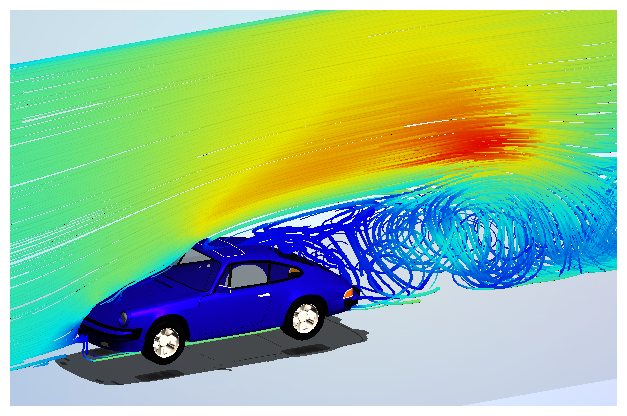
Smoke: A continuous medium that shows the flow path.
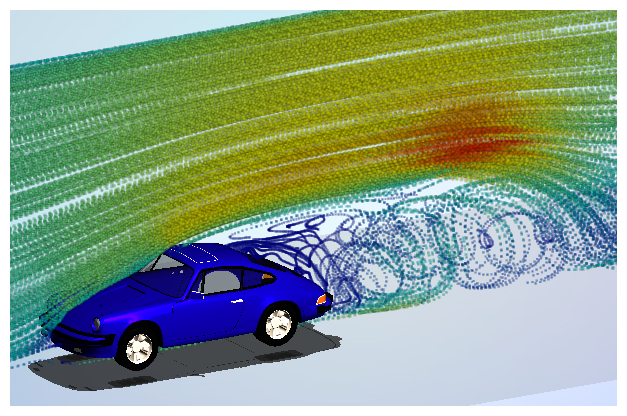
Particles: Solid spheres that show the flow path.
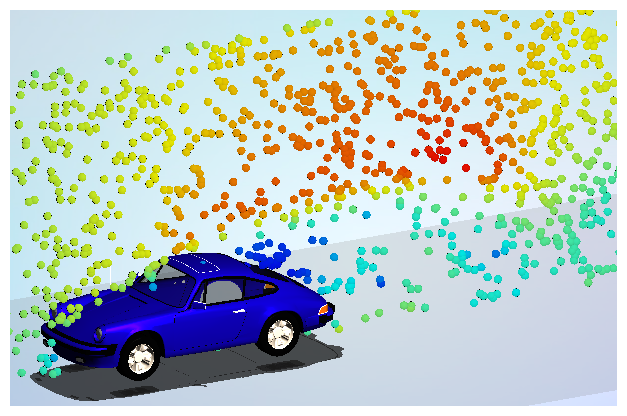
Settings
To control the appearance of traces, click Settings.
Count: Control the number of flow lines.
Show fewer flow lines to see less detail:
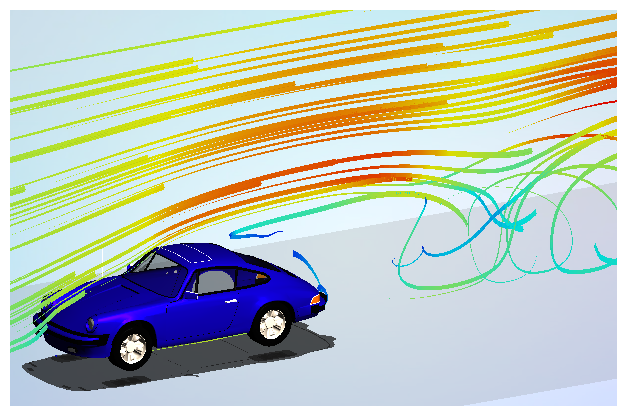
Show more flow lines to see greater detail:
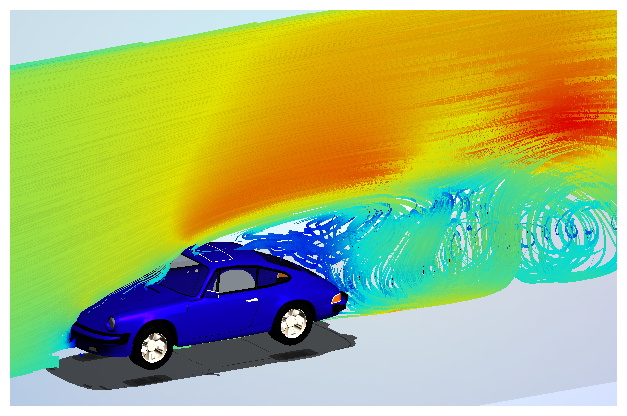
Speed (%): Control the animation speed of your flow lines. Use a slower animation speed for a detailed view of flow movement. Use a faster speed to understand how the flow structures (wakes, separation regions, etc.) form and dissipate relative to one another.
Size (%): Control the thickness of your flow lines.
An example of thinner flow lines:
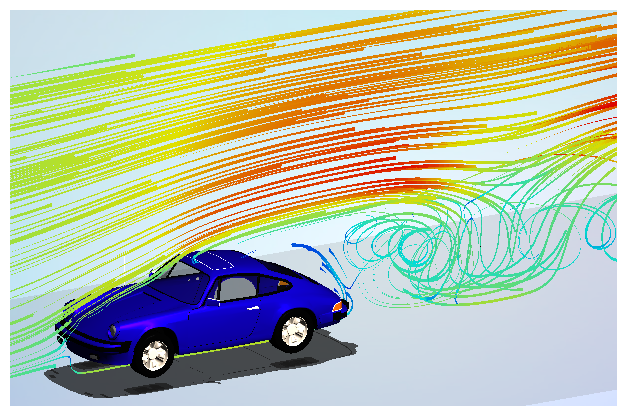
An example of thicker flow lines:
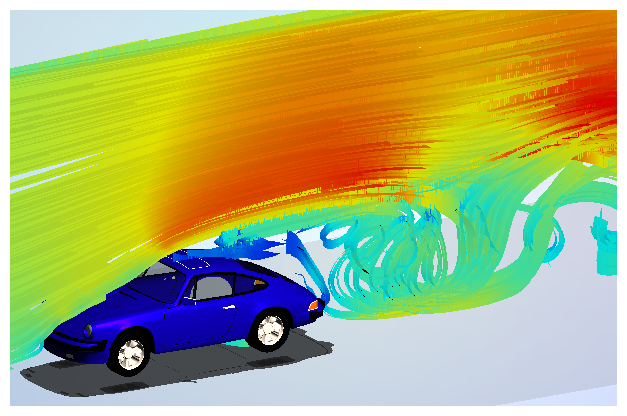
Length: Control how long a path is displayed by each flow line.
Short flow lines:

Long flow lines:
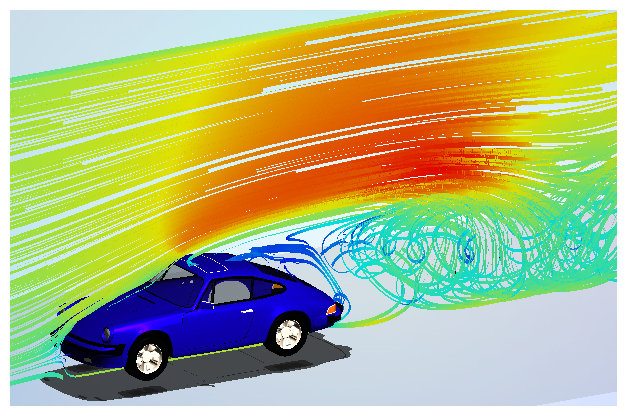
Show Seed Box Manipulators (3D only)
For 2D simulations, flow lines appear on the plane. For 3D, they appear throughout the entire wind tunnel. To focus on a smaller area or to improve clarity, use the Seed Box Manipulators. This tool provides the ability to define exactly where the flow lines appear within the wind tunnel:
